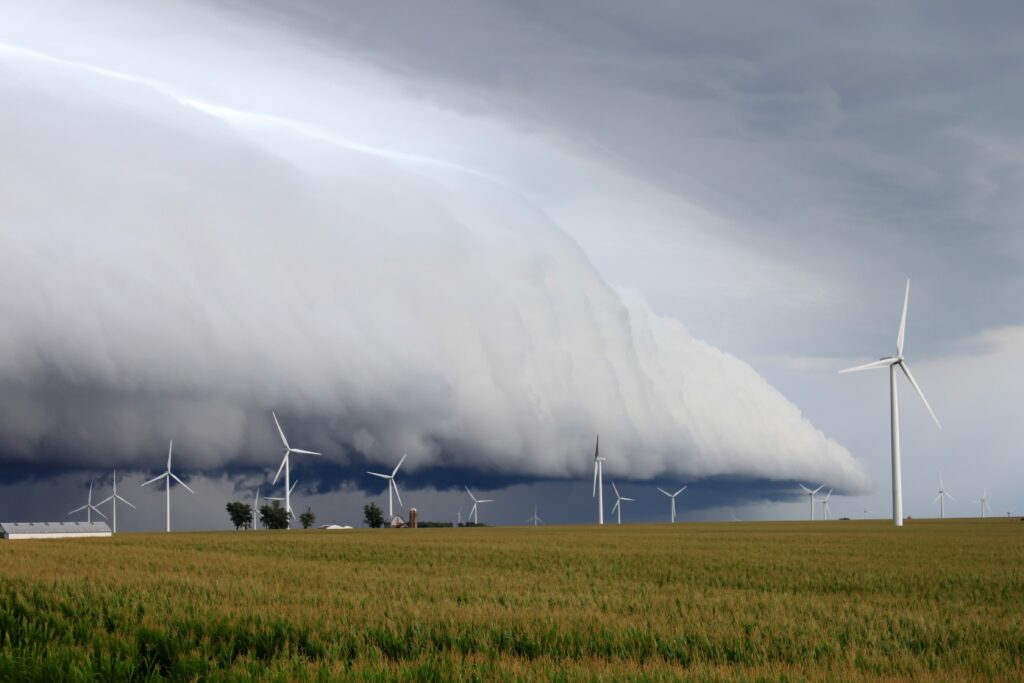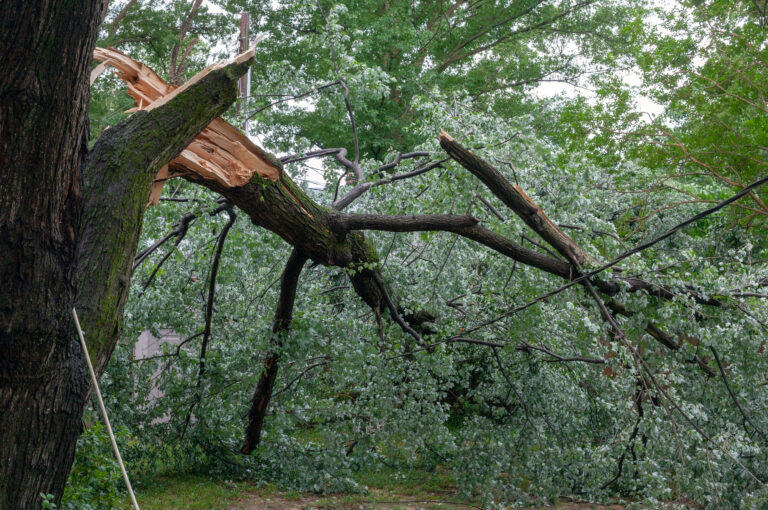What Is a Squall Line?
A squall line is a fast-moving band of severe thunderstorms that forms ahead of a cold front. These storms can stretch for hundreds of miles and produce intense weather conditions, often moving rapidly and leaving little time for preparation. Squall lines are notorious for their ability to generate widespread damage in a short period.
1. Destructive Straight-Line Winds
One of the most significant threats from a squall line is damaging straight-line winds. Unlike tornadoes, which rotate, straight-line winds push forward with force, sometimes reaching speeds of 70 mph or higher. These winds can down trees, damage buildings, and create hazardous road conditions.
2. Embedded Tornadoes
Although squall lines are primarily associated with strong winds, they can also produce tornadoes. Embedded tornadoes form quickly and can be difficult to detect on radar, making them especially dangerous. These tornadoes are often short-lived but can still cause severe destruction along their path.
3. Heavy Rain and Flash Flooding
Squall lines frequently bring torrential rainfall in a short period, leading to flash flooding. Urban areas with poor drainage and regions near rivers are particularly vulnerable. Flash floods can wash away vehicles, damage homes, and make travel extremely hazardous.
4. Intense Lightning Strikes
Lightning is a common feature of squall lines and poses a serious risk to both people and property. Frequent cloud-to-ground strikes can ignite fires, damage electrical systems, and cause power outages. It’s crucial to seek shelter indoors and avoid using electrical appliances during a thunderstorm.
5. Hail Damage
Some squall lines produce large hail, which can cause significant damage to roofs, windows, and vehicles. Hailstones can vary in size, but even small hail can be dangerous when driven by high winds. If hail is expected, move cars into garages or covered areas and stay indoors away from windows.
How to Stay Safe During a Squall Line Event
Given their rapid movement and intensity, preparing for a squall line in advance is essential. Keep an eye on weather forecasts and have multiple ways to receive emergency alerts. If a severe thunderstorm warning is issued, seek shelter in a sturdy building and avoid unnecessary travel. Stay away from windows, unplug electronics, and be ready for possible power outages.
Final Thoughts: Stay Alert and Be Prepared
Squall lines can bring a variety of hazardous weather conditions, often with little warning. Understanding their dangers and taking appropriate precautions can help minimize risks. By staying informed and knowing what to do when severe weather strikes, you can protect yourself and your property from the destructive forces of nature.


